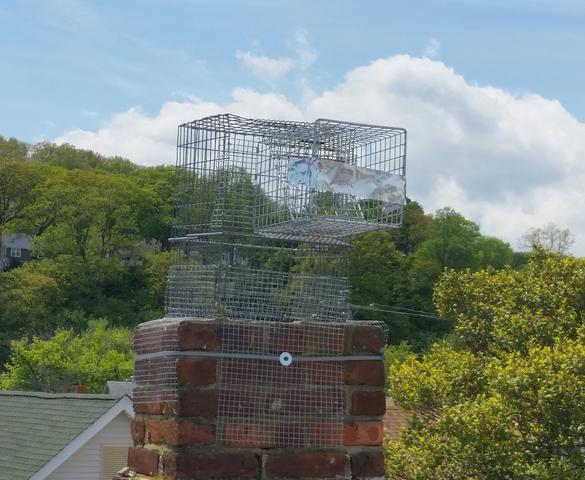Raccoons removed and excluded in Piscataway, NJ
Challenge
There is an old expression “once bitten, twice shy” that’s used when you are hesitant or frightened to do something again because of an unpleasant initial experience, often when you are reluctant to fall in love again after a bad relationship. Also, it’s one of my favorite classic rock songs as a wildlife technician because many furbearers, especially raccoons, are “once bitten, twice shy” when it comes to traps. If these critters had a close call with a trap, but manage to escape, they become trap-shy. You’ll often hear it called trap-savvy, trap-wise, or trap-wary, but no matter what you call it, it means the same thing. Many critters can actually become educated about traps from previous bad experiences with them. Most often, trap-shy animals result from botched trapping jobs attempted by do-it-yourselfers. Homeowners or landowners will go to the local farm supply store to buy their own traps and try to trap the animals themselves. Big mistake! There are dozens of easy-to-make trapping mistakes such as using improper techniques (like not properly fastening a trap), using odor-contaminated equipment, or using the wrong trap for a particular furbearer, allowing them to escape.
Do-it-yourselfers often become raccoon “educators” rather than raccoon trappers, and they make it much harder for these now-wiser animals to be trapped and relocated later on. Often, when dealing with these trap-shy critters, it doesn't matter how delicious the bait looks and smells or if you offer them a Las Vegas buffet full of food — these “once bitten, twice shy” animals won't be fooled again!
Solution
It was clear that this particular raccoon that took up residence in this home in Piscataway, NJ had a PhD in trapping because there was nothing under the sun that would lure it into a trap. Also, because this raccoon was harboring inside a chimney flue, it created an even more challenging situation: The “one-way” had to be placed horizontally. Otherwise, the raccoon could easily get the door open and get back inside the chimney. To prevent this from happening, I used a right angle 'nose cone' and attached the one-way to it, and then secured the trap to the chimney with hardware cloth and large cable ties. After I was done, this trap would have stayed on through a tornado! Now, once this raccoon exits the chimney flue, there is no way that it's getting back in.

